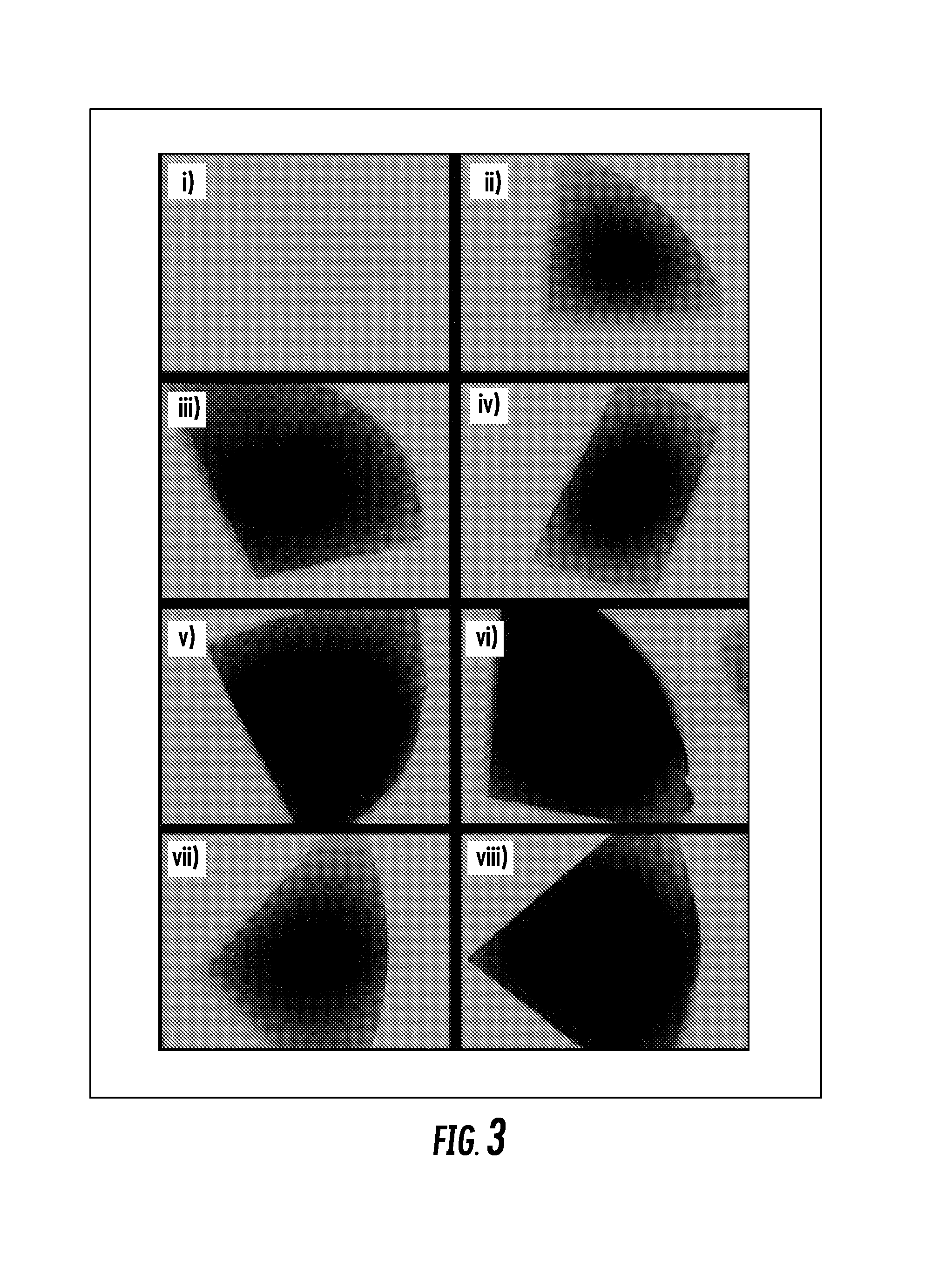Biomaterials comprising hyaluronic acid binding peptides and extracellular matrix binding peptides for hyaluronic acid retention and tissue engineering applications
a technology of hyaluronic acid and biopolymer, which is applied in the direction of peptide/protein ingredients, drug compositions, prosthesis, etc., can solve the problems of affecting the tissue replacement function of patients, lack of lubrication, and ineffective clinical strategies for delivering hyaluronic acid (ha) to diseased tissu
- Summary
- Abstract
- Description
- Claims
- Application Information
AI Technical Summary
Benefits of technology
Problems solved by technology
Method used
Image
Examples
example 1
[0113]The biomaterial compositions were first applied to cartilage tissue (FIG. 1a). An HA-binding peptide was covalently bound to the cartilage surface via a heterobifunctional poly(ethylene glycol) (PEG) chain (FIG. 1b). The HA-binding peptide-polymer therapy was designed to noncovalently bind HA (endogenously produced or exogenously injected) to the tissue surface (FIG. 1b). It was thought that by localizing HA to the surface of articular cartilage, it would enhance the boundary lubrication effects of free HA in the synovial fluid and mimic the presumed role of lubricin to improve joint lubrication in a healthy knee. In addition, HA has a number of biological functions that would be ideal to concentrate at the tissue surface including reducing inflammation, mediating matrix metalloproteinase expression and protecting cells from radical damage. Coating the surface with HA can also physically protect the cartilage surface from cytokines and degrading enzymes that are frequently fou...
example 2
[0115]Second, a clinically relevant one-step injection / coating technology of the present invention was developed based on non-covalent binding of the HABpeptide-polymer system. Tissue surfaces, including, for example, articular cartilage, conjunctiva and sclera of an eye, are collagen I and II enriched, and can act as stable anchoring sites for the ECM binding peptides (ECMBPep). The HA-binding peptide that is linked to the ECMBPep through the PEG spacer can recapture HA that is lost through a physical or biological mechanism and can dynamically bind and concentrate HA where it is needed. Specifically, amine functionality of Col I and II ECMBPep were reacted with NHS-PEG-MAL followed by conjugation of C-HABPep to the Maleimide end groups. The resultant biomaterial composition of the present invention is mixed with HA and applied to tissue surfaces in a single step (FIG. 2A). Fluorescence staining of ECMBPep on tissue culture plates coated with collagen I and collagen II (FIGS. 2B-K)...
example 3
[0116]Since HA injected into a joint is quickly cleared and HA is in low concentration in a diseased environment, a key test of the polymer-modified hyaluronic acid-binding surface is the ability to retain the benefit of increased lubrication after HA is no longer present in the environment. HA-binding coatings without exogenous lubricant were able to replicate the low friction characteristics of native cartilage tested with physiological levels of HA lubricant. Cartilage surfaces treated with the HA-binding polymer system were incubated with HA solutions. After incubation, the tissue samples were thoroughly washed to remove any unbound HA and lubrication was tested in PBS without any HA.
[0117]Diseased tissue represents a further challenge, as it is characterized by a rough, fibrillated surface with very different frictional properties. Multiple pathogenic mechanisms can lead to cartilage deterioration and not necessarily correlate to higher friction values, including inflammatory a...
PUM
| Property | Measurement | Unit |
|---|---|---|
| temperatures | aaaaa | aaaaa |
| pH | aaaaa | aaaaa |
| pH | aaaaa | aaaaa |
Abstract
Description
Claims
Application Information
 Login to View More
Login to View More - R&D
- Intellectual Property
- Life Sciences
- Materials
- Tech Scout
- Unparalleled Data Quality
- Higher Quality Content
- 60% Fewer Hallucinations
Browse by: Latest US Patents, China's latest patents, Technical Efficacy Thesaurus, Application Domain, Technology Topic, Popular Technical Reports.
© 2025 PatSnap. All rights reserved.Legal|Privacy policy|Modern Slavery Act Transparency Statement|Sitemap|About US| Contact US: help@patsnap.com



